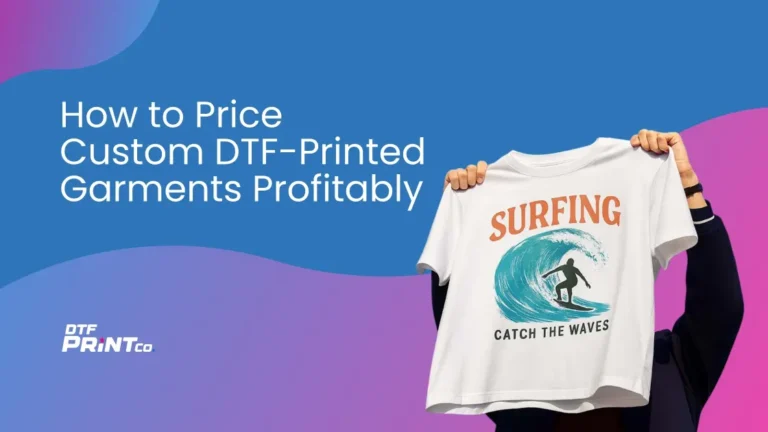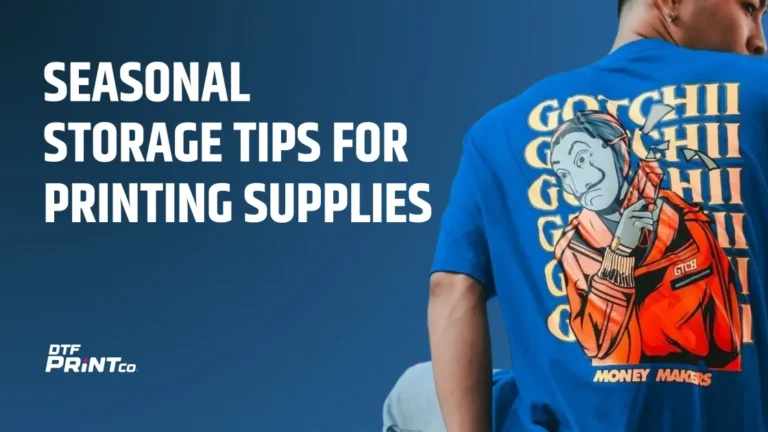Heat transfer printing has become a go-to solution for hobbyists, creators, and businesses alike. From crafting at your kitchen table to launching a custom tee business, the possibilities are wide open. Whether you’re designing for friends, starting an apparel line, or just having fun, heat transfers offer a creative and customizable way to get your designs out into the world. But with options like DTG (Direct-to-Garment) and DTF (Direct-to-Film), knowing which method—or approach—works best can be tricky. That’s where this guide comes in.
What Is DTG Printing?
DTG, or Direct-to-Garment printing, is basically the inkjet printer of the t-shirt world. It uses special water-based inks to spray designs directly onto fabric. It’s like printing a high-res photo, but instead of paper, you’re feeding a shirt into the machine.
How It Works:
- Load your digital design into the DTG printer software.
- Pretreat the shirt (important for ink absorption and color pop).
- Place the shirt in the printer. The ink is sprayed directly onto the fibers.
- Cure the print with a heat press or tunnel dryer.
Pros:
- Insanely detailed and soft prints. The ink embeds into the fabric, resulting in a breathable, soft finish that feels like it’s part of the shirt.
- Amazing for cotton garments. DTG works best on 100% cotton or high-cotton blends.
- Perfect for small runs or one-offs. No need for screens or prep.
- Photo-realistic results. Great for intricate artwork and gradient-heavy designs.
Cons:
- Limited fabric compatibility. Doesn’t play well with synthetic materials.
- Higher upfront and per-print cost. Equipment and ink ain’t cheap.
- Garment prep required. You’ll need a good pretreatment routine to get solid results.
What Is DTF Printing?
DTF, or Direct-to-Film, is the newer kid on the block that’s making serious waves. Instead of printing directly onto the shirt, you print the design onto a special film, add a powdered adhesive, cure it, and then press it onto the garment.
How It Works:
- Print your design onto a PET film using DTF inks.
- Apply a heat-activated adhesive powder to the print.
- Cure the film so the powder melts into the ink.
- Use a heat press to transfer the design onto your garment.
Pros:
- Works on almost any fabric. Cotton, polyester, silk, blends, spandex—you name it.
- Tough and long-lasting. Excellent resistance to washing and wear.
- Great for mass production. Fast and repeatable for bulk orders.
- Print ahead of time. You can prep dozens of transfers and apply as needed.
Cons:
- Slightly stiffer print feel. Especially on large or solid-colored designs.
- Detail loss in some designs. Not as good at subtle gradients.
- Extra step required. Print and press are separate actions.
- Not reusable. Each film sheet is one-and-done.
Quick Comparison Table
| Feature |
DTG |
DTF |
| Fabric Compatibility |
Best for cotton |
Works on cotton, polyester, silk, blends |
| Print Quality |
High detail and soft feel |
Vibrant, slightly less detailed |
| Cost |
More expensive upfront |
More affordable for bulk |
| Durability |
Good with care |
Highly durable |
| Print Feel |
Soft and integrated |
Slightly stiff |
| Best For |
Small batches, detailed work |
Large batches, fabric variety, tough wear |
DIY vs Premade Transfers: What’s the Real Difference?
Let’s get into the nitty-gritty. If you’ve been eyeing TikToks of crafters making custom tees in their garages, you’ve probably thought about going the DIY route. But then again, there’s something very tempting about ordering a premade transfer, pressing it on, and calling it a day. So, how do these two paths really stack up?
DIY Transfers
Going DIY is empowering. You have full control from design to print. It’s a great choice for people who love experimenting or who have a creative streak that just won’t quit.
Pros:
- Complete design freedom.
- Long-term savings if you print regularly.
- Control over quality, timing, and materials.
- Immense satisfaction when it all comes together.
Cons:
- Steeper learning curve. You WILL mess up your first few shirts.
- Initial investment in equipment and materials.
- Time-consuming. Setup and troubleshooting are part of the game.
- You need space for your gear and workflow.
Premade Transfers
Premade transfers are perfect for those who want the professional look without the hassle. Whether you’re short on time, space, or confidence, this option is hard to beat for sheer convenience.
Pros:
- Fast and easy. No printing headaches.
- Reliable quality when sourced from good vendors.
- Minimal setup. Just a heat press and a shirt.
- Ideal for people testing the waters.
Cons:
- Less flexibility. You’re limited to what you can order.
- Slightly higher cost per piece.
- Can’t tweak things on the fly.
- You’re trusting someone else’s color calibration and quality.
Real Talk:
When I first started out, I was all about the DIY life. My first setup was a small DTG unit squeezed into the corner of my laundry room. There were so many failed attempts (RIP to a whole stack of blank tees), but the learning process was worth it. Now? I do both. DTG for photo prints, DTF for sports teams and work shirts, and premade transfers when I just want a break or need quick turnaround. It’s about balance.
DTG vs DTF: Deep Dive
Print Quality & Detail
DTG delivers unparalleled clarity, especially for high-res images. DTF is no slouch, but gradients and intricate details can sometimes lose a bit of sharpness.
Fabric Compatibility
DTF is the champion here. It’s the jack-of-all-trades for fabric. DTG is picky—cotton or bust.
Durability
DTF wins hands down. These prints last through tons of washes without significant fade or peel.
Print Feel
DTG gives you that buttery soft feel. DTF feels more like a high-quality decal. It’s not unpleasant, but you’ll notice the difference.
Production Speed
DTF is built for efficiency. You can print now, press later, and scale with ease. DTG’s more manual, one-shirt-at-a-time.
Cost
DTG = High initial cost + more expensive per print. DTF = Lower ongoing costs and better margins for bulk orders.
Eco-Friendliness
DTG has an edge thanks to water-based inks and less plastic waste. DTF uses film and adhesive powders—less green.
On-Demand Fulfillment
DTG works great for POD (print-on-demand). DTF also works, but you’ll need storage for film transfers.
What Works Best for Different Designs?
Use DTG If:
- You’re doing photographic or highly detailed artwork.
- You need a soft-touch, breathable finish.
- You want to print on-demand with no storage.
- You’re working with natural fabrics.
Use DTF If:
- You need durability (think sports jerseys or work uniforms).
- You want vibrant colors on synthetics.
- You need to fulfill large orders quickly.
- You want to print now and press later.
FAQs
Do DTF prints last longer than DTG?
Yes, generally. DTF transfers often last 50+ washes if applied properly, which slightly edges out DTG for long-term durability.
Is DTF printing worth the investment?
If you’re printing regularly and want to offer a wide range of products (and fabrics), it absolutely is. It pays for itself quickly in many business models.
How long do DTF prints really last?
With proper application and garment care, DTF transfers can hold up for years. Avoid high-heat drying and harsh detergents.
What’s better for photos: DTF or DTG?
DTG wins here — its fine spray and water-based inks give it the edge for photorealistic prints with subtle gradients.
Will DTF prints crack or peel?
If cured and pressed properly, they won’t. Most cracking issues come from rushing the process or using cheap materials.
Are DTF and DTG inks interchangeable?
Nope. They use totally different formulations. DTF uses pigment inks that bond with an adhesive powder; DTG uses inks that absorb into the fabric.
What’s more budget-friendly: DTF or DTG?
DTF is typically cheaper per unit and has a lower startup cost, making it great for small businesses.
Which has the better feel: DTF or DTG?
DTG. It feels like part of the fabric. DTF is a little more noticeable to the touch, like a soft patch.
Final Thoughts
Choosing between DTG and DTF (and between DIY and premade) isn’t a one-size-fits-all situation. It all comes down to your specific needs—your project type, your budget, your long-term goals, and yes, even how much patience you have. DTG is perfect for soft, high-detail prints on cotton, while DTF excels in toughness, fabric variety, and mass production.
When considering DIY vs premade, think about how much creative control you want. DIY lets you personalize every step, but requires more time and skill. Premade transfers offer simplicity and speed, especially great for beginners or high-volume work.



